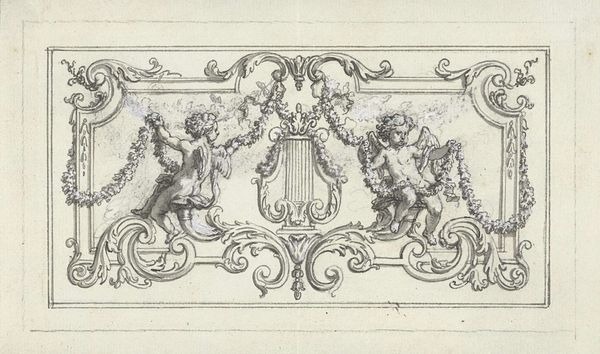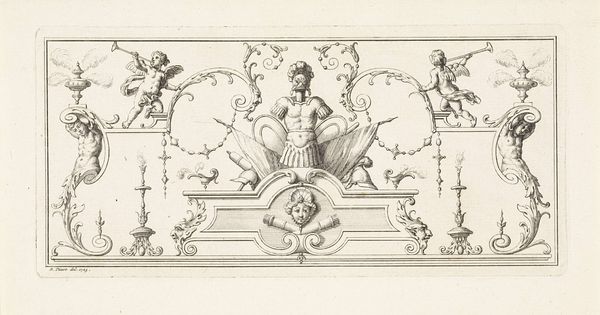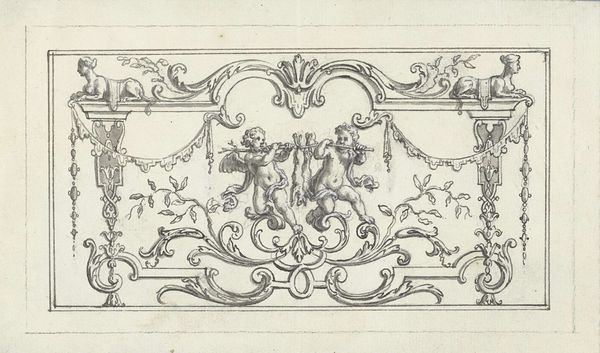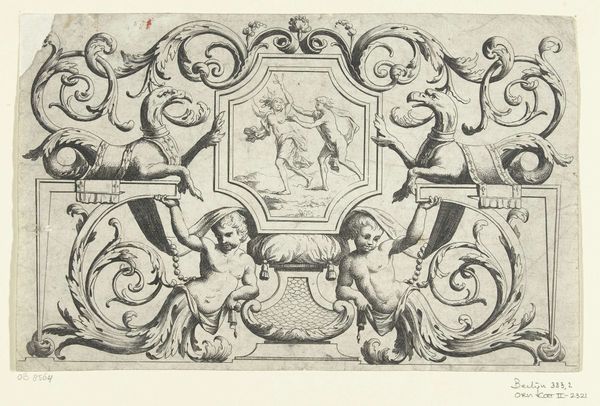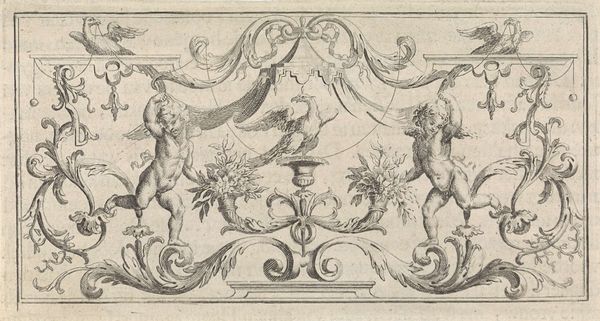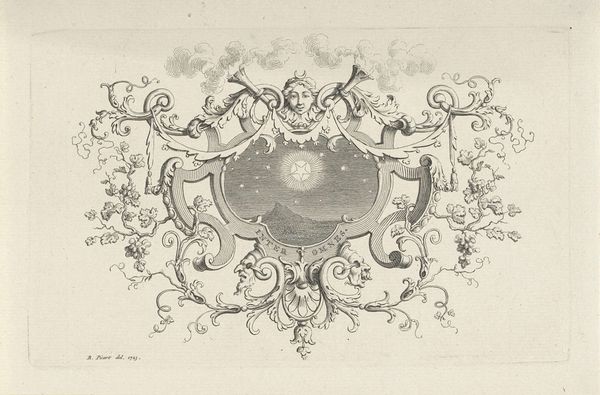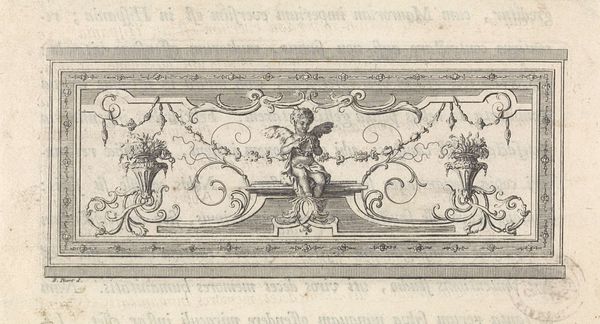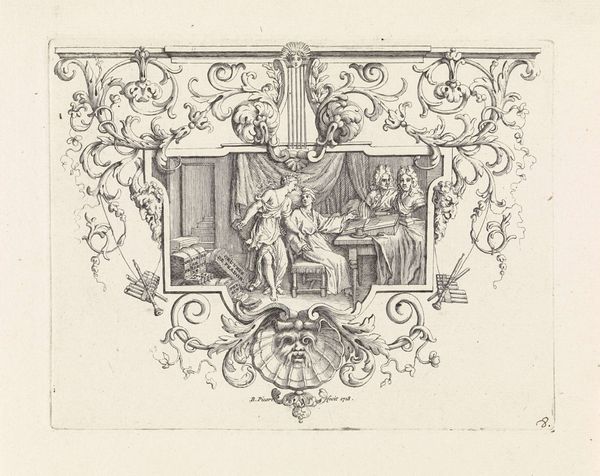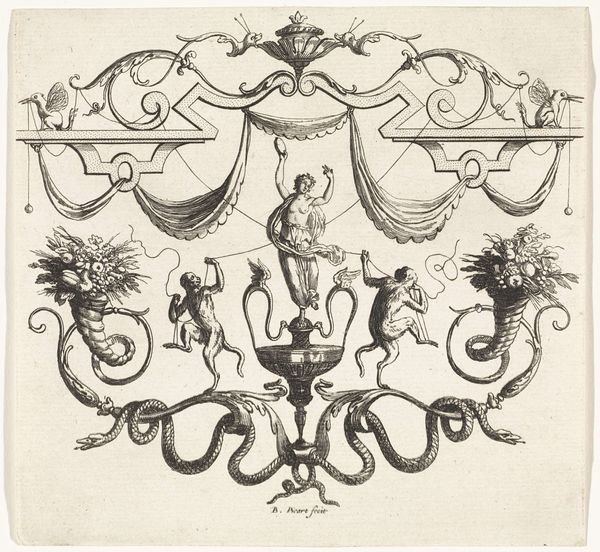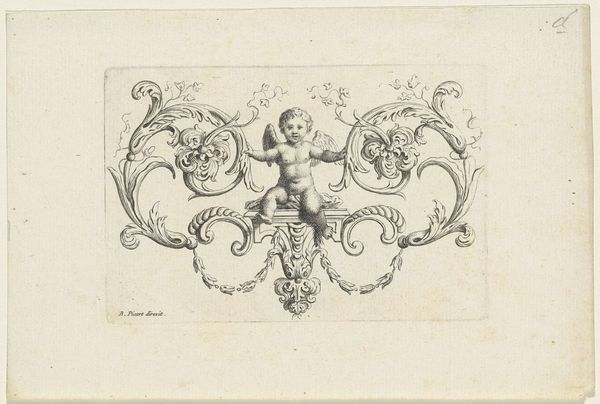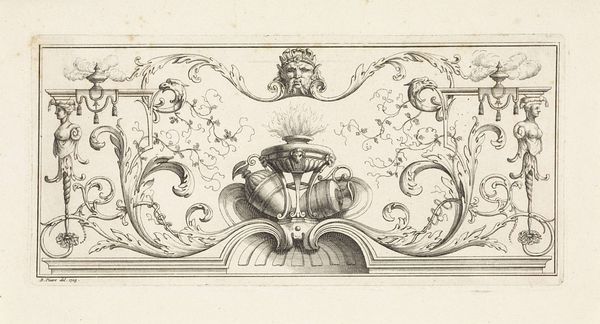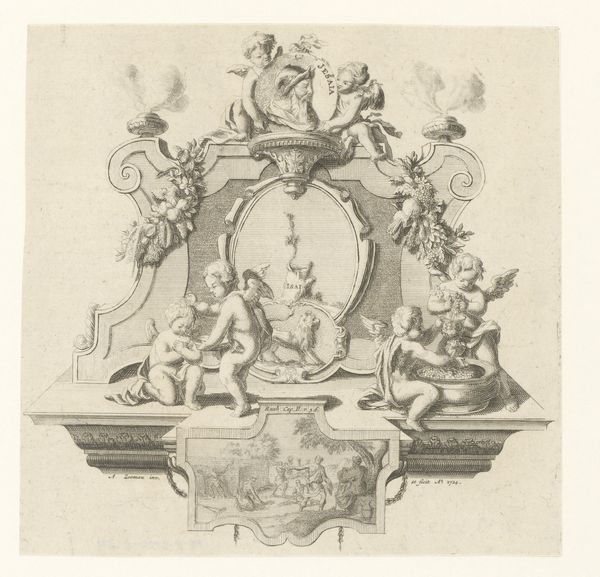
drawing, pen
#
portrait
#
drawing
#
allegory
#
baroque
#
pen drawing
#
pen illustration
#
pen sketch
#
personal sketchbook
#
sketchwork
#
pen-ink sketch
#
pen work
#
sketchbook drawing
#
pen
#
sketchbook art
#
initial sketch
Dimensions: height 86 mm, width 150 mm
Copyright: Rijks Museum: Open Domain
This panel design with a flute-playing putto was etched by Bernard Picart, likely in the early 1700s. Its delicate lines are made possible by the intaglio process: the design is incised into a metal plate, and then the ink is carefully wiped across the surface, leaving it only in the etched recesses. The plate is then pressed onto paper. This print simulates the kind of carving that would have been applied to furniture, or perhaps even directly onto a wall panel. The labor that would have been required to produce such a surface is obvious in the intricate detail. Picart’s print gives us the benefit of that skill, but in readily reproducible form. In other words, it democratizes elite taste, making it available to a wider audience. This is the power of printmaking and its close relationship to both craft and capitalism: it creates an efficient substitute for the handmade, while at the same time celebrating its enduring appeal.
Comments
No comments
Be the first to comment and join the conversation on the ultimate creative platform.
